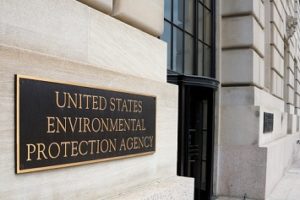The Trump administration has twice proposed to slash the Environmental Protection Agency’s (EPA) budget by record amounts, and Congress keeps refusing to do it.
For the second straight year, the administration proposed a 23% reduction in funding for the Agency, a $2.58 billion cut from fiscal year (FY) 2018, and once again Congress chose to continue funding for FY 2019 at the FY 2018-enacted level of $8.053 billion. In addition to this base funding, the Consolidated Appropriations Act of 2018 included an extra $703 million for water infrastructure and $63 million more for Superfund cleanups.
Superfund was in fact one of the very few programs for which the EPA had proposed a modest funding increase for FY 2019. EPA Administrator Scott Pruitt has listed the return of Superfund sites to beneficial use as one of the Agency’s six priority goals for 2018–2019. The other goals are improving air quality by implementing pollution control measures to reduce the number of nonattainment areas under the National Ambient Air Quality Standards (NAAQS); empowering communities to leverage EPA water infrastructure investments; meeting new statutory requirements to improve the safety of chemicals in commerce; increasing the environmental law compliance rate; and accelerating permitting-related decisions. With the approved budget, the Agency should be able to do all that and more.
The EPA had also proposed to eliminate about 3,200 full-time equivalent positions, another idea rejected by Congress.
Staffing Levels Protected
“Even in these divisive times, we were able to work together,” commented Senator Tom Udall (D-NM) on Democrats and Republicans joining forces to reject the proposed cuts. Udall is the Ranking Member on the Senate Appropriations Subcommittee on Interior, Environment, and Related Agencies.
“This funding level protects all EPA staff, including all scientists, experts, and support personnel, and rejects requested funding for large-scale Agency-wide buyouts,” continued Udall. “The bill provides full funding for all EPA state and regional grants with targeted increase for programs such as diesel emissions reduction grants, rejecting deep cuts proposed by the President that would have devastated state environmental efforts.”
Program Amounts
Following are funding amounts for several specific programs:
- State and tribal assistance grants—$3.5 billion
- Competitive grant program to provide technical assistance for improved water quality or safe drinking water and adequate wastewater to small systems or individual private well owners—$12.7 million
- Science and Technology programs—$714 million
- Great Lakes Restoration Initiative—$300 million
- Federal permit program for the regulation of coal combustion residuals in states that do not have their own permitting programs—$6 million
- Superfund enforcement—$166 million
- Brownfields grants—$80 million
- Diesel Emission Reductions Grants—$75 million
- Water Infrastructure Finance and Innovation Act (WIFIA) program—$63 million
Information on the enacted budget for the EPA is here.

